10 Seafood Orders That Make Chefs Roll Their Eyes
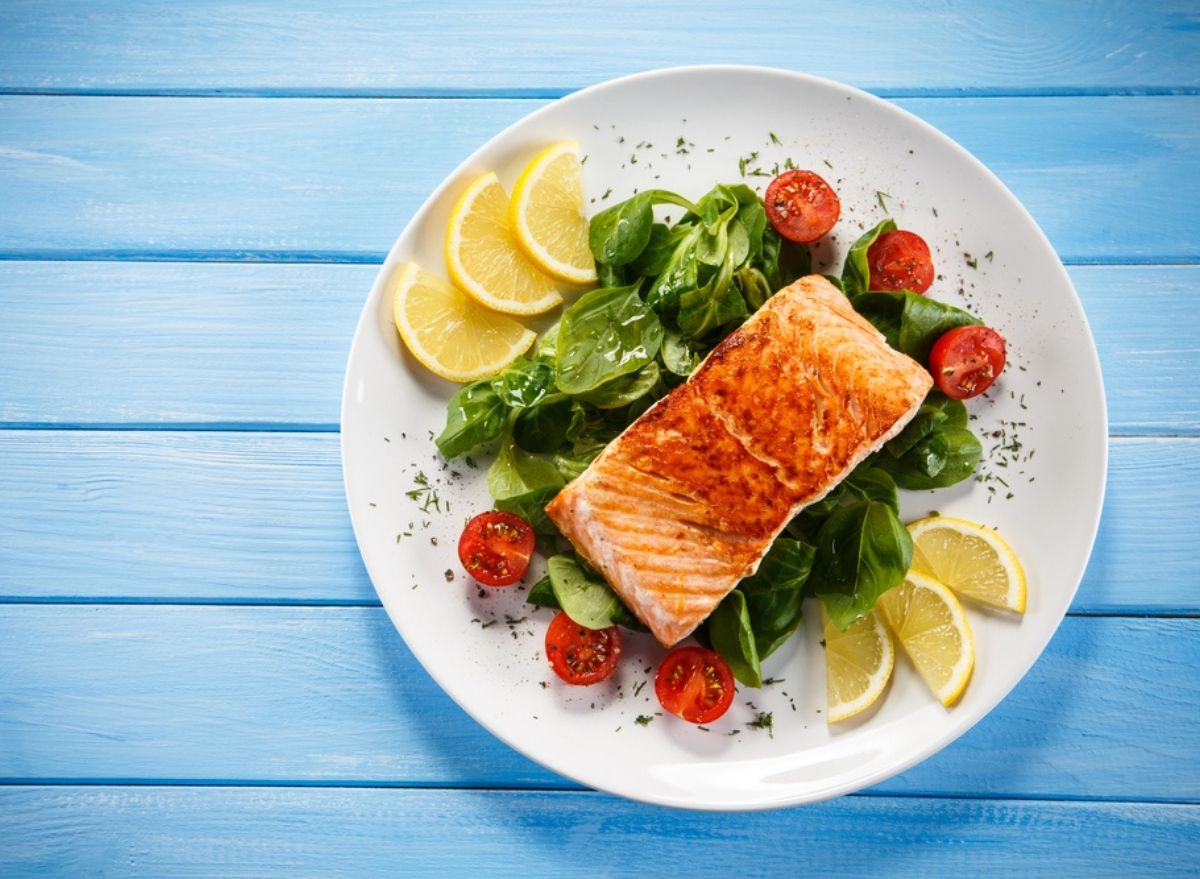
Whether it's for a special occasion or a weekly treat, most of us love dining out on seafood. In fact, according to the U.S. Department of Commerce, the average American ate 19 pounds of fish and shellfish in 2020. Plus, with less mess—and no stinky kitchen to worry about—it's a meal many of us love to leave to the pros. But, if you get salmon every time you go out for seafood, you could be making one of many orders that chefs dislike.
According to the people actually sizzling up your seafood for you, not branching out and ordering the same old thing could hinder your experience. We spoke to chefs about what orders they love and what they hate, and the consensus was to order fresh, local fish as much as possible. Surprisingly, many also lean toward healthier preparations as well as orders that support sustainability.
Read on for the seafood orders chefs really dislike, and how to order well at your favorite seafood restaurant.
Salmon
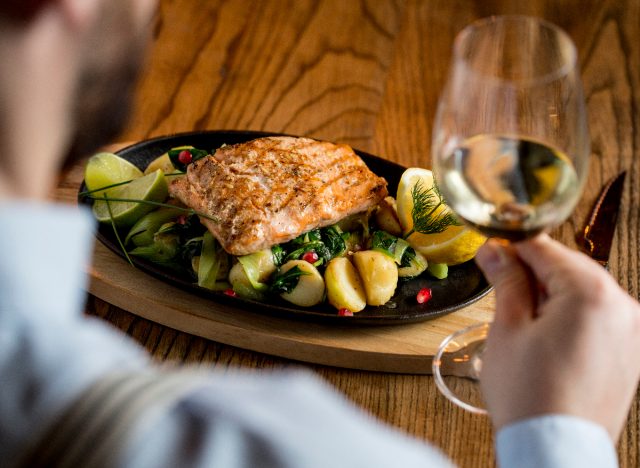
While it's a healthy choice, it's not the most sustainable choice, says chef Charlotte Langley, founder of Scout. "This may be a hot take, but I'd say salmon. It is a species ubiquitous with restaurants, and I wish we would learn to branch out beyond simply ordering the salmon dish on the menu," Langley says. "The more we diversify our consumption of different species, the better the chance we have at supporting the regenerative nature of our oceans and waterways."
Tilapia
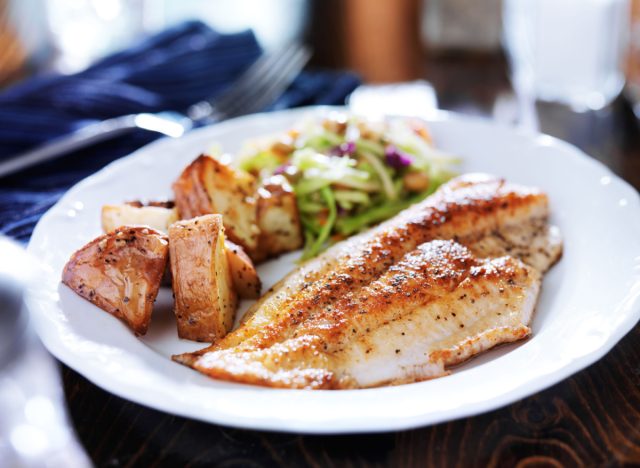
While many seafood restaurants have it on the menu, many chefs don't like the fish, says Chef K.C. Gulbro of FoxFire and Copper Fox. "The Tilapia, simply because many chefs consider this type of fish 'junk fish,' and because it takes on the flavor of everything you cook. I personally like Tilapia, but it has a bad rep. We serve a Crab-Stuffed Tilapia that is delicious."
Chilean Sea Bass
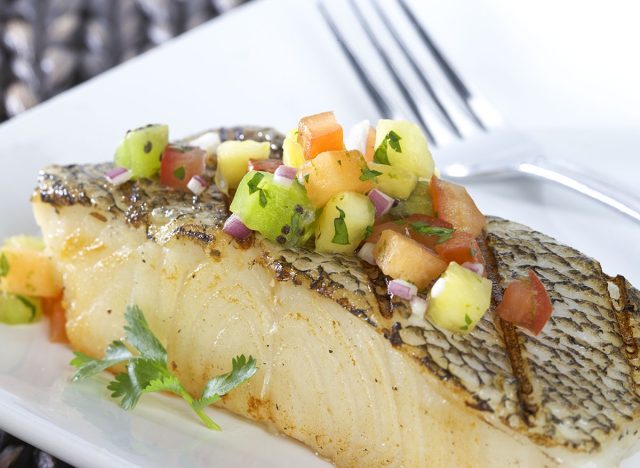
This fish, while absolutely delicious, is on the verge of becoming endangered and should be avoided says Matt Blair, the executive chef at Miami Marriott Biscayne Bay. "Chilean sea bass (Patagonian Toothfish) is an overfished species that faces the possibility of becoming an endangered species," says Blair. "As many commercial fishermen do not support the demand as a means to prevent overfishing, there's been a rise in illegal fishing practices."
A vegetable special
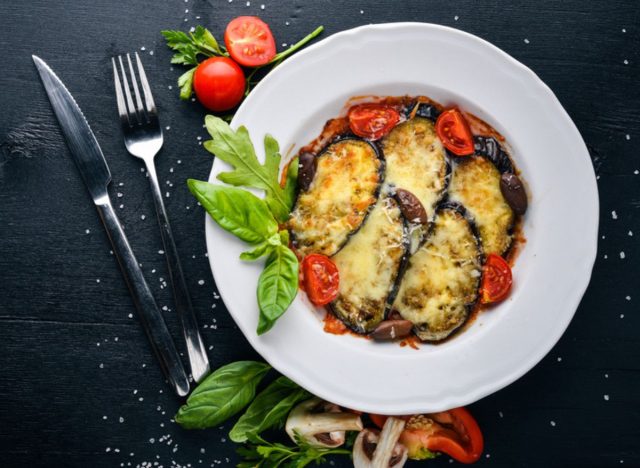
While most chefs are proud of everything on their menu, if they have a specialty, they'd rather you tried that, says executive sous Chef Marissa Williams of California seafood restaurant Herb & Sea. "I'd prefer if my diners didn't order the eggplant entree, not because it's not delicious but because it's not seafood," Williams told us. "We proudly source our seafood from local fisheries, so it should be the only thing you are ordering at Herb & Sea."
Deep fried seafood
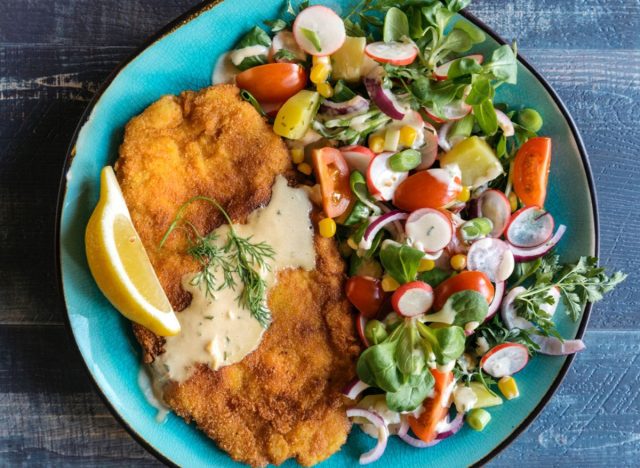
If you're health conscious, or just want to actually taste the fish you're eating, skip the fryer, says chef Ron Stewart, of Chef Ron. "If I could suggest one dish for my guests to never order again, it would be any deep-fried seafood item," says Stewart. "Deep-frying seafood can significantly reduce its nutritional value, as well as destroy the delicate flavor of the dish."
Skipping the fresh catch
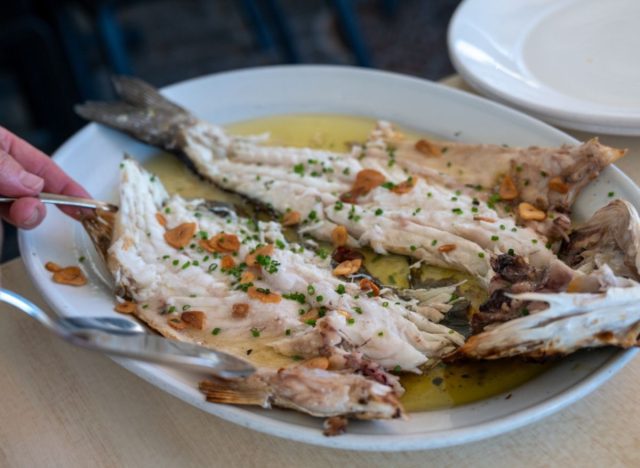
The right move at almost any seafood restaurant is ordering the catch of the day, says Williams. Even if it's unfamiliar, anything listed as fresh is going to be just that—fresh from the ocean. "I always recommend our fresh catch dish because it's a rotating special based on what our local fisheries catch," said Williams. "We'll feature fish like sheepshead, opah, thresher shark, and sand dabs."
Chef Sean Ferraro, chef-owner of Madison Avenue Pizza (who formerly worked at Morimoto), agrees, saying, "I eat seafood regularly at restaurants, at least once a week, and I primarily try to avoid seafood that was purchased frozen and I try to find seafood that was caught locally. For instance, I currently live in Tampa Bay where grouper and snapper are the main locally caught fish, and clams, shrimp, and oysters are also very local."
Not trying the shrimp
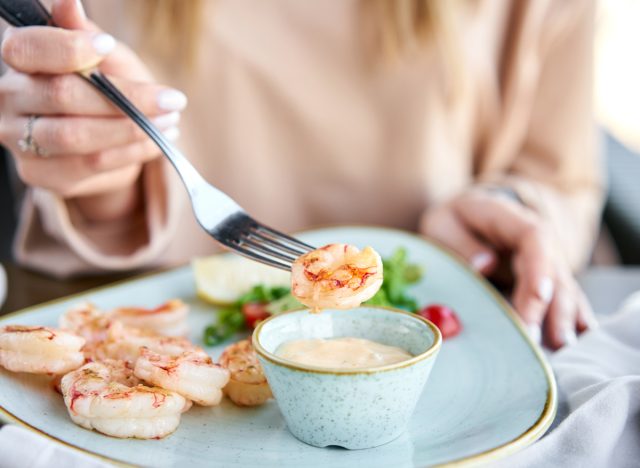
Italian restaurant veteran, and Mortadella Head owner and chef, Chuck Sillari gets frustrated when guests skip the humble shrimp. "In my experience, both as a chef who develops menus and a cook who works on the line, I wish guests would order more shrimp," Sillari says.
Why? "Shrimp is an ingredient that is easy to prepare and portion in the kitchen. Shrimp cooks up fast on the line. It's an ingredient that you can get on the customer's table quickly which allows for more table turnover," he explained.
Being afraid to order unfamiliar fish
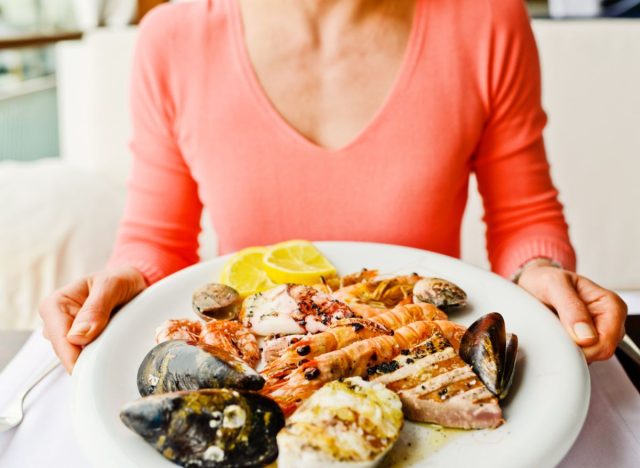
Chefs don't mind making another salmon filet, but they'd love it if you branched out and tried more unusual delights from the sea, says, The Banks Fish House and Bistro du Midi, chef Robert Sisca. "I love skate wing. It's a fish that I have run multiple times at both restaurants and sometimes guests don't order," says Sisca. "I plan on bringing it back into The Banks this spring and continue to sell it since I love the flavor of it so much. Even when I go fishing, I love catching them and cooking at home with my boys. Last time we went out together, we caught a few and they loved it!"
Skipping the raw bar
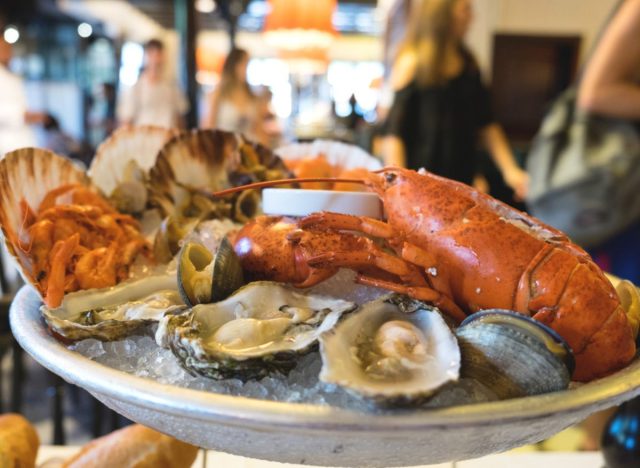
In case it's not clear, seafood restaurant chefs want guests who are adventurous, and if you don't try a few raw items, they're disappointed, says Langley. "Start with oysters, mussels, and clams. Not only are bivalves and mollusks tasty and nutritious, they are remarkably sustainable. These shellfish require far less resources to harvest than most other animal proteins, support balance in their aquatic environments, and usually have abundant populations."
They don't try poached fish
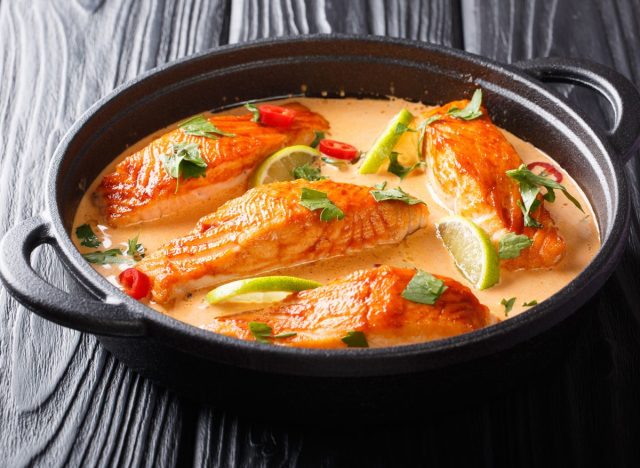
This healthy preparation should be more popular, says Stewart, who explains, "If I had to choose a dish for my guests to enjoy more often, it would be shallow poached seafood dishes. Not only is shallow poaching (in white wine or court bouillon) a healthy way to prepare seafood that retains more vitamins and minerals, but it also helps bring out natural flavors with minimal seasoning required. Additionally, this cooking method helps keep fish moist without the dried out overcooked texture that so often comes with grilling or baking certain species of seafood."









